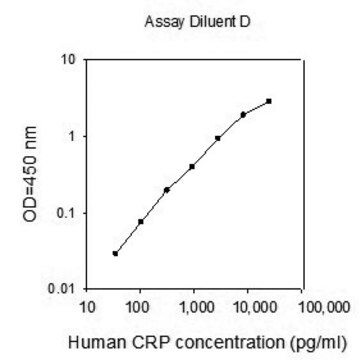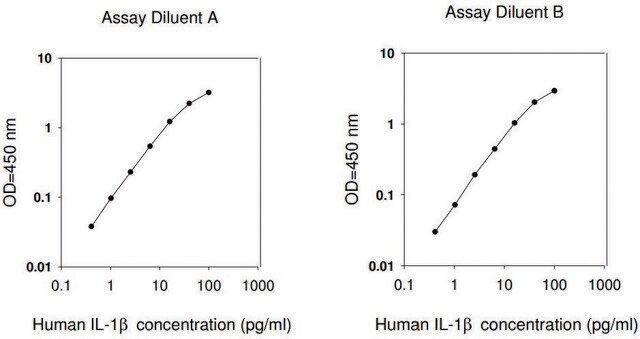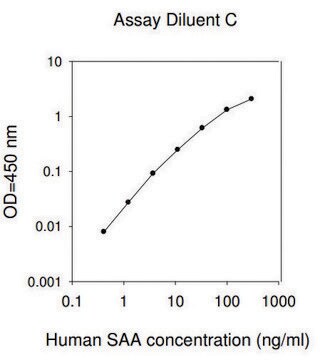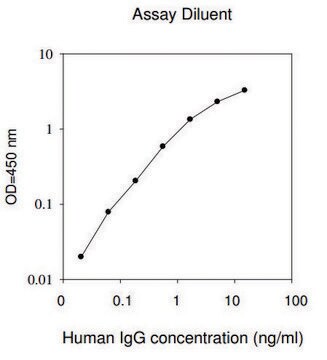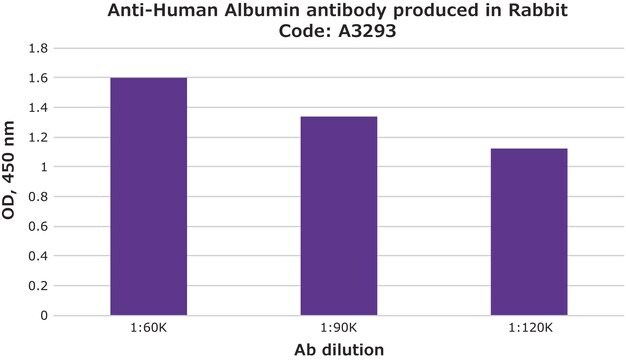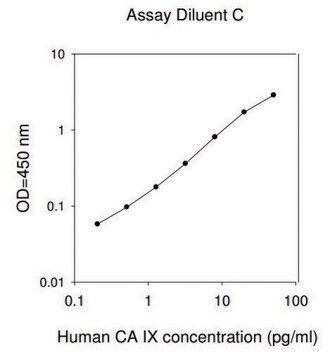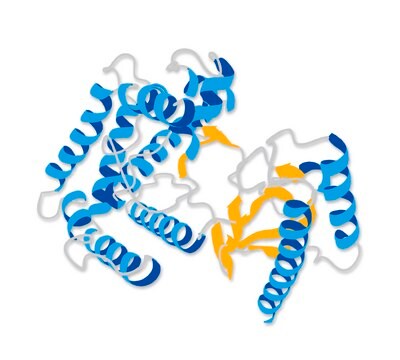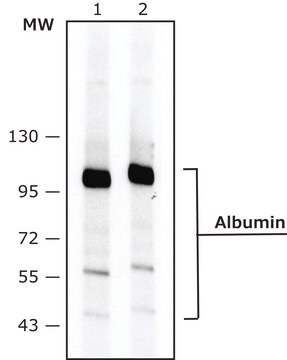RAB0603
Human ALB / Serum albumin ELISA Kit
Synonym(s):
Serum Albumin
Sign Into View Organizational & Contract Pricing
All Photos(1)
About This Item
UNSPSC Code:
41116158
NACRES:
NA.32
Recommended Products
species reactivity
human
packaging
kit of 96 wells (12 strips x 8 wells)
technique(s)
ELISA: suitable
input
sample type serum
sample type cell culture supernatant(s)
sample type plasma
assay range
inter-assay cv: <12%
intra-assay cv: <10%
sensitivity: 6 ng/mL
standard curve range: 4.915-1200 ng/mL
detection method
colorimetric
shipped in
wet ice
storage temp.
−20°C
Gene Information
human ... ALB(213)
General description
The ALB ELISA kit provides for the quantitative measurement of Albumin in Cell Culture Supernatants, Plasma and Serum.
This ELISA (enzyme-linked immunosorbent assay) kit is an in vitro enzyme-linked immunosorbent assay for the quantitative measurement of a target protein in biological samples, such as serum, plasma, cell culture supernatants, urine and/or cell and tissue lysates.
Application
For research use only. Not for use in diagnostic procedures.
Please refer to the attached General ELISA KIT Procedure (sandwich, competitive & Indirect ELISA)
Please refer to the attached General ELISA KIT Procedure (sandwich, competitive & Indirect ELISA)
Biochem/physiol Actions
Human serum albumin (HSA) is a single, non-glycosylated chain that binds to various endogenous and exogenous ligands. It functions as a plasma transporter molecule and primarily binds to non-esterified long-chain fatty acids. Albumin also binds to and transports various metabolites, such as bilirubin, steroid hormones, thyroxin, tryptophan, certain vitamins and metal ions within the body. It also has the ability to bind to several drugs and affects their pharmacokinetics and pharmacodynamics. HSA functions as a nitric oxide-carrier and also influences the antioxidant capacity of human serum. In cases of acute hemolysis, HSA binds to heme in the blood stream and transports to hemopexin, where in it is reabsorbed by parenchymal liver cells.
Other Notes
A sample Certificate of Analysis is available for this product.
Please type the word sample in the text box provided for lot number.
Please type the word sample in the text box provided for lot number.
signalword
Warning
hcodes
pcodes
Hazard Classifications
Met. Corr. 1
Storage Class
8A - Combustible corrosive hazardous materials
flash_point_f
Not applicable
flash_point_c
Not applicable
Choose from one of the most recent versions:
Already Own This Product?
Find documentation for the products that you have recently purchased in the Document Library.
Customers Also Viewed
Chen Zhang et al.
Scientific reports, 7(1), 12707-12707 (2017-10-07)
Liver disease is a serious problem affecting millions of people with continually increasing prevalence. Stem cell therapy has become a promising treatment for liver dysfunction. We previously reported on human minor salivary gland mesenchymal stem cells (hMSGMSCs), which are highly
Na Du et al.
Renal failure, 39(1), 229-235 (2016-11-24)
DMP-1 supplement has a satisfactory effect on diabetic kidney disease in patients with whether T1DM or T2DM. Oxidative stress and TGF-β signal pathway activation are essential in the pathogenesis of DKD. We aim to investigate the effect of DMP-1 on
A Francesca Setiadi et al.
Journal of neuroimmunology, 332, 147-154 (2019-04-30)
IL-17 has been implicated in the pathogenesis of multiple sclerosis (MS). Here, we show that blockade of IL-17A, but not IL-17F, attenuated experimental autoimmune encephalomyelitis (EAE). We further show that IL-17A levels were elevated in the CSF of relapsing-remitting MS
Cai Zhang et al.
Nature communications, 9(1), 3658-3658 (2018-09-12)
RNA silencing inhibits mRNA translation. While mRNA translation accounts for the majority of cellular energy expenditure, it is unclear if RNA silencing regulates energy homeostasis. Here, we report that hepatic Argonaute 2 (Ago2)-mediated RNA silencing regulates both intrinsic energy production
Qiong Wu et al.
Molecular medicine reports, 16(6), 9473-9479 (2017-11-21)
The development of novel culture systems that mimic the in vivo microenvironment may be beneficial for inducing the differentiation of stem cells and promoting liver function. In the present study, spheroid cultures and decellularized liver scaffolds (DLSs) were utilized to obtain
Our team of scientists has experience in all areas of research including Life Science, Material Science, Chemical Synthesis, Chromatography, Analytical and many others.
Contact Technical Service
